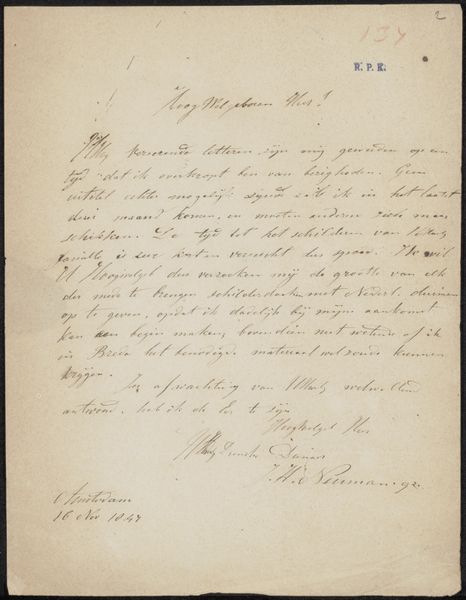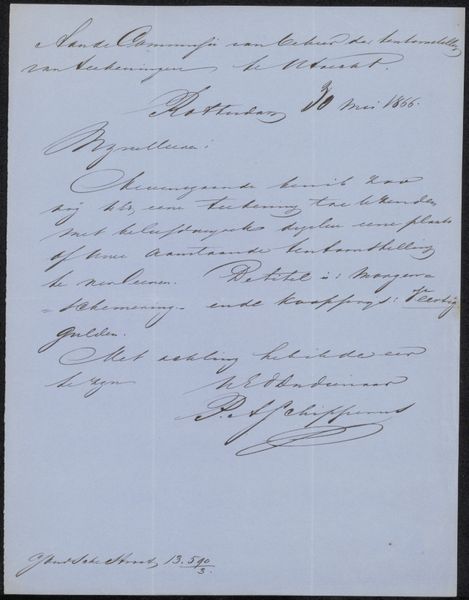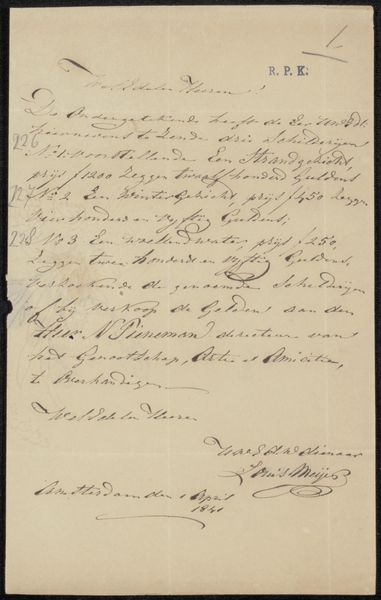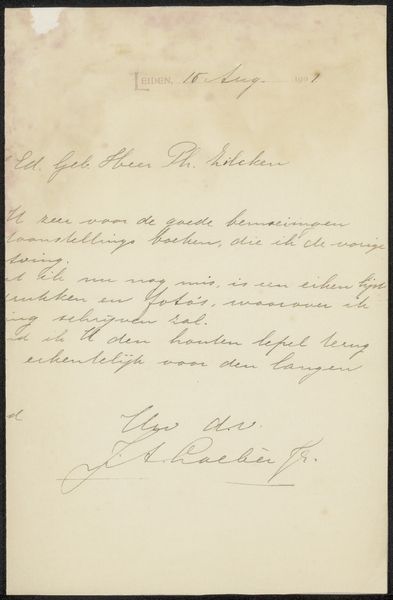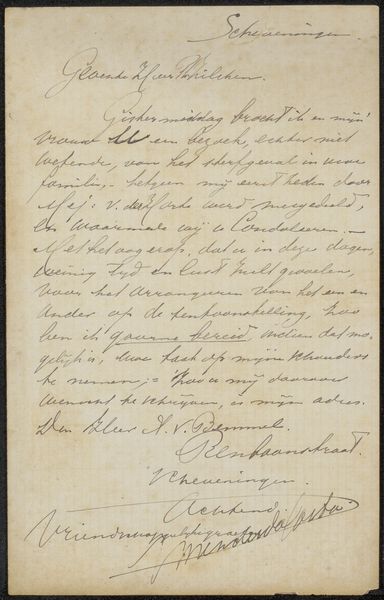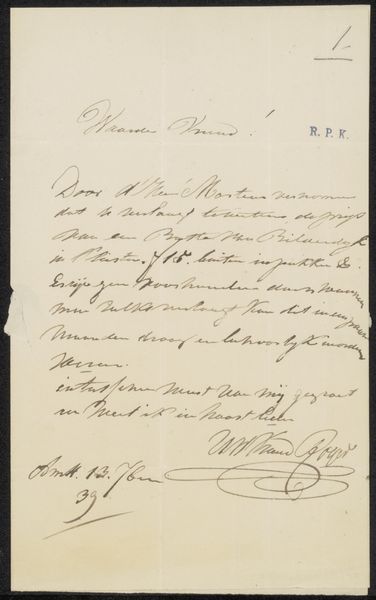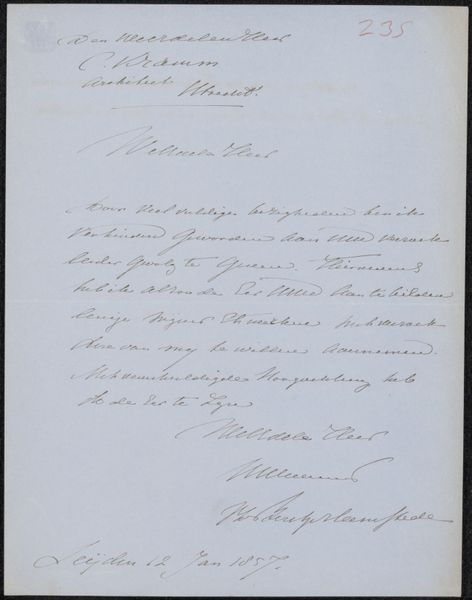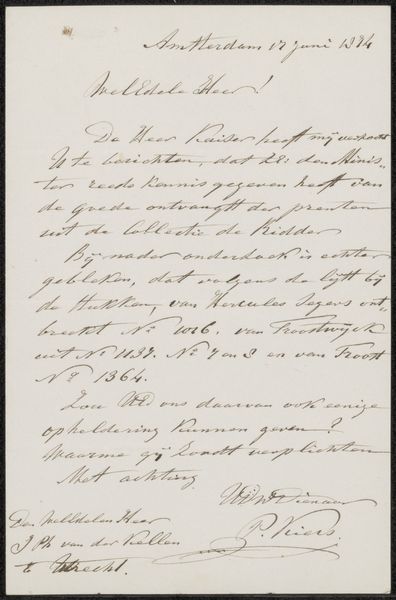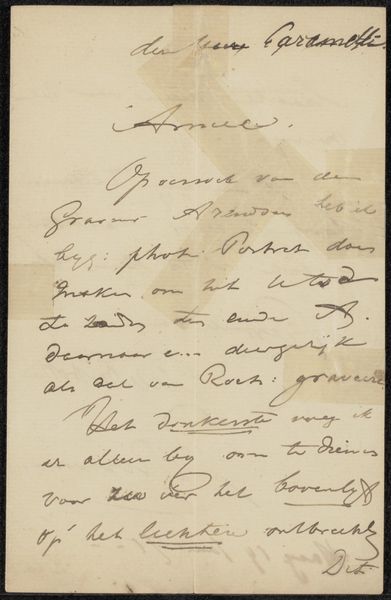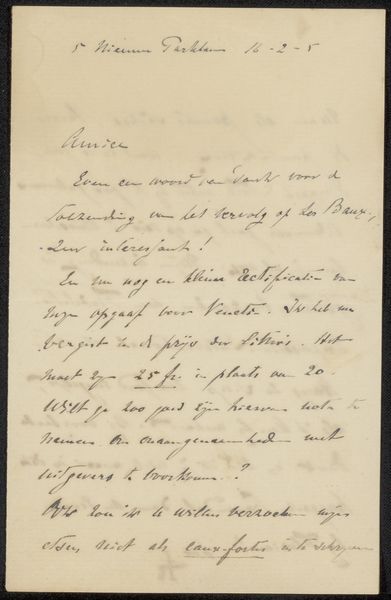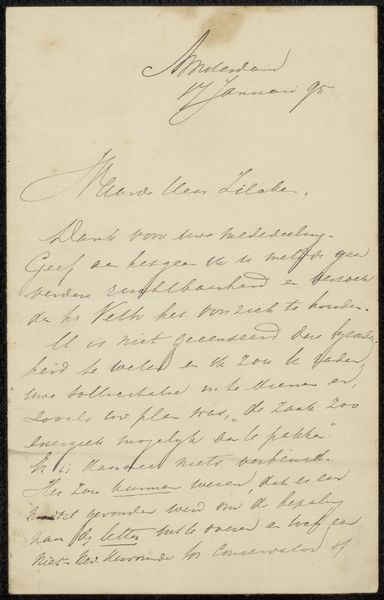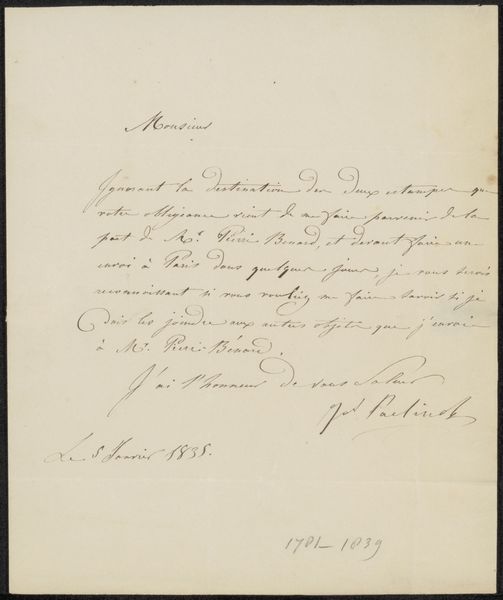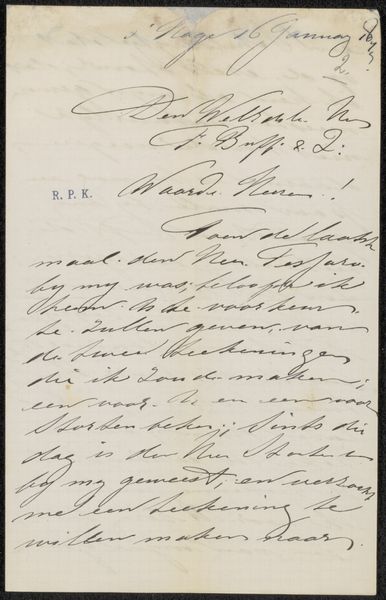
drawing, paper, ink, pen
#
drawing
#
pen sketch
#
sketch book
#
hand drawn type
#
paper
#
personal sketchbook
#
ink
#
ink drawing experimentation
#
pen-ink sketch
#
ink colored
#
pen work
#
sketchbook drawing
#
pen
#
sketchbook art
#
calligraphy
Copyright: Rijks Museum: Open Domain
Editor: We're looking at "Brief aan Lambertus Hardenberg" by Josefus Gerardus Hans, likely from between 1836 and 1891. It’s an ink drawing, almost like a pen sketch, on paper, and it's currently held in the Rijksmuseum. My first thought is how personal and intimate it feels, like peeking into someone's private correspondence. How do you interpret a piece like this, given its everyday subject matter? Curator: Well, that "everyday" nature is precisely where the interest lies, isn't it? From a historical perspective, a letter like this gives us a direct link to the social networks and intellectual exchanges of the time. It's not just about the content of the letter; it’s about the very act of correspondence, the role it played in shaping artistic and intellectual communities. The fact that this was preserved suggests that Hans was an important figure in Dutch artistic society. I wonder, what can you infer from his stylized handwriting? Editor: It gives the letter an elevated and artistic tone; it’s a carefully constructed message, not a quickly jotted note. Almost as if it were written for himself as much as for the intended receiver. Curator: Exactly. We also have to think about the public role of letters during this period. Epistolary culture allowed the broader access to intellectual debate for people excluded in formal institutions, but more significantly for women who often lacked more public venues. Can we understand Hans' work by placing it in its time’s sociopolitical landscape? How does this intimate letter inform the narrative of artistic expression within a broader context? Editor: It’s amazing to think how a seemingly simple drawing can reveal so much about the societal frameworks surrounding artistic expression! Now I want to learn more about 19th-century epistolary culture. Curator: Indeed, it makes one think about what forms of communication from *our* time might find their way into museums one day. What would they reveal about *us*?
Comments
No comments
Be the first to comment and join the conversation on the ultimate creative platform.

